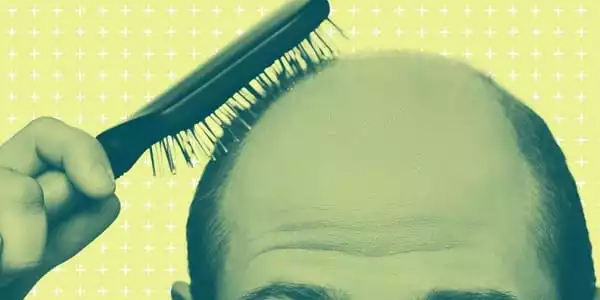A new gene involved in hair growth has been discovered by scientists. According to The New York Times, a team of researchers has made an astounding discovery that could change how we understand aging and possibly even prevent baldness in humans. This finding could have an impact on future research and treatments for male pattern baldness and other types of hair loss.
Researchers in the United States have made an unexpected discovery that could change the way humans prevent baldness. Until now, it was thought that as humans age, their stem cells, which are known to replenish tissues and organs, including hair, become exhausted and die.
The team was able to identify two genes involved in hair aging by studying the hair of aging animals, potentially laying the groundwork for new anti-hair loss treatments in human patients. The exit of stem cells from hair follicle structures contributes to hair whitening and loss, in a mechanism that could be used to prevent human baldness.
A team of researchers have made an astonishing discovery that could redefine how we understand aging, The New York Times reports and maybe even prevent baldness in humans. The cells changed shape from round to amoebalike and squeezed out of tiny holes in the follicle.
Rui Yi, Professor of Pathology
Until now, scientists believed that stem cells in the bulges of growing hair follicles died over time due to a process known as stem cell exhaustion, causing hair to first turn white and then die off once enough stem cells died.
According to Rui Yi, Professor of Pathology at Northwestern University, “the cells changed shape from round to amoebalike and squeezed out of tiny holes in the follicle.” The discovery was made public in the journal Nature Aging.
However, a team led by Northwestern University pathology professor Rui Yi discovered that the theory could be incorrect by observing individual strands of hair grow and age in mice. Rather than dying, the stem cells squeezed their way out of the tiny holes in the hair follicles, changing their shapes in the process. To put it another way, the stem cells gave up and fled.

“I would not have believed it if I hadn’t seen it for myself,” Yi told The New York Times. “It’s almost insane in my head.” Yi and his colleagues investigated the genetic processes that govern this activity, discovering two genes, FOXC1 and NFATC1, that are responsible for trapping stem cells in the follicle’s bulge and were less active in older hair follicle cells.
Hair follicle stem cells were observed to change shape, allowing them to squeeze through tiny holes in the follicle structure. ‘I would not have believed it if I hadn’t seen it for myself,’ said Professor Li, who led the study, ‘it’s almost crazy in my mind.’ They return to their normal, more rounded shape after exiting and migrate away from the structure before disappearing, possibly engulfed by the immune system.
To better understand the aging process in hair, the researchers used a long-wavelength laser that can penetrate deep into tissue to observe the growth of individual hair follicles in the ears of mice. According to the report, they labeled hair follicles with a green fluorescent protein, anesthetized the animals so they didn’t move, placed their ear under the microscope, and returned several times to observe what was happening to the same hair follicle.
“When the animals started to grow old and gray and lose their hair, their stem cells started to escape their little homes in the bulge. Sometimes, the escaping stem cells leaped long distances, in cellular terms, from the niche where they lived,” the researchers found.
To test their theory, the researchers bred mice lacking either of those two genes. They began to lose their hair after only four to five months. They had lost most of their hair after 16 months, roughly when mice reach middle age, except for tufts of gray fur. The researchers are now testing whether they can save the stem cells that escape from the follicles of aging mice, and if they can, it could change everything for people who are losing their hair.
The genes’ function was to confine stem cells in the bulge. So the scientists bred mice lacking those genes to see if they were the master controllers. The mice began to lose hair when they were 4 to 5 months old. The animals had lost a lot of hair by 16 months when they were middle-aged, and the sparse strands that remained were gray, according to the report.














